Nvidia GeForce RTX 2060 Review: Is Mainstream Ray Tracing For Real?
Why you can trust Tom's Hardware
Results: Ashes of the Singularity and Battlefield V
Ashes of the Singularity: Escalation (DX12)
According to Nvidia, 2060 Founders Edition is designed to excel at 1920x1080. It should also deliver solid performance at 2560x1440. So, we started our Ashes of the Singularity testing with the Crazy quality preset, which applies 4x MSAA and several Ultra-level options. Although the game supports multiple graphics APIs, we use DirectX 12 for our benchmarks.
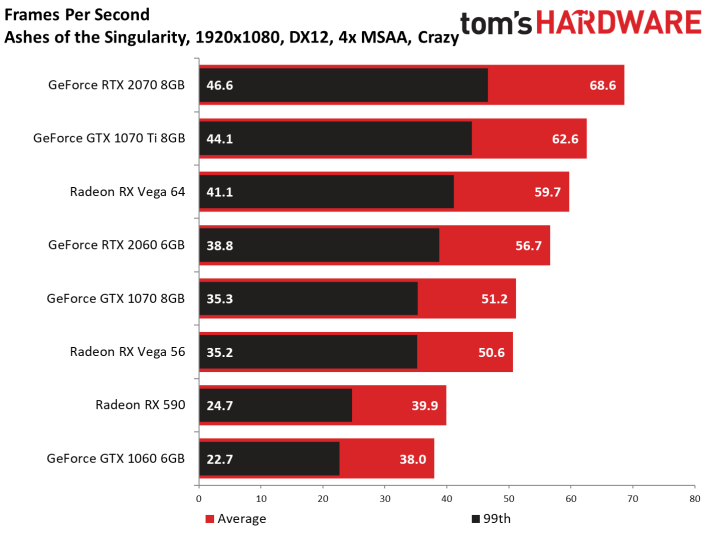

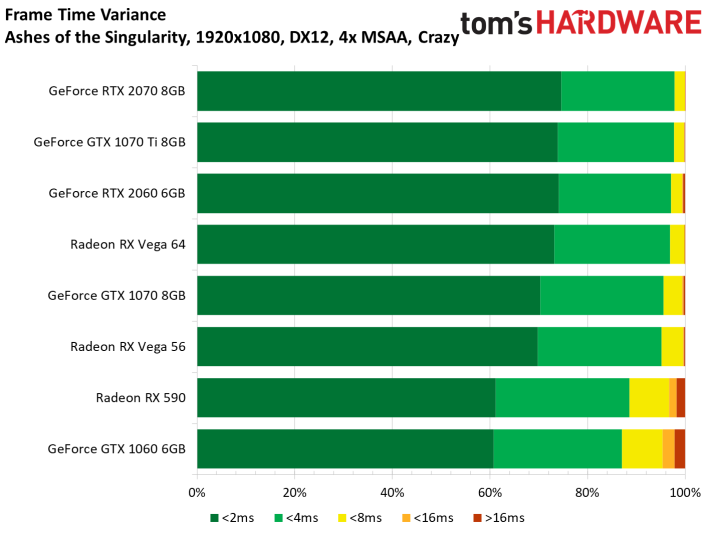
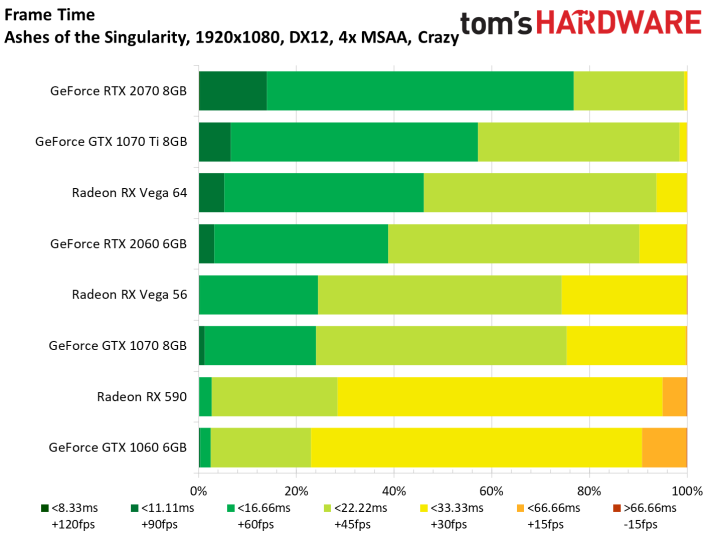
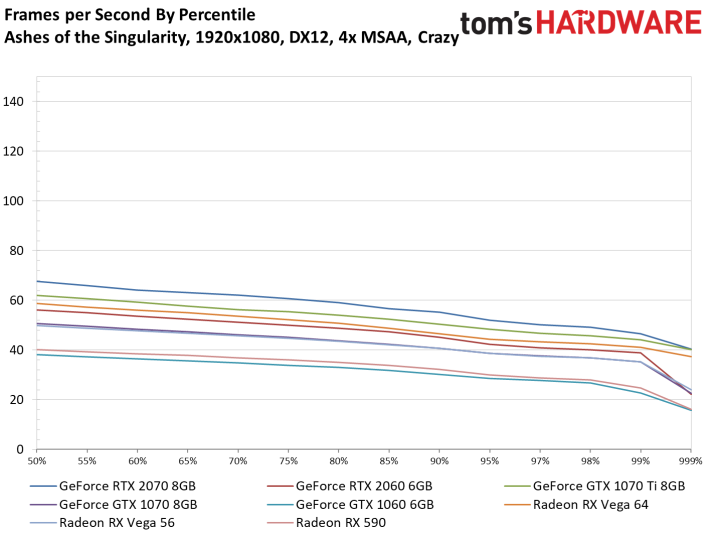
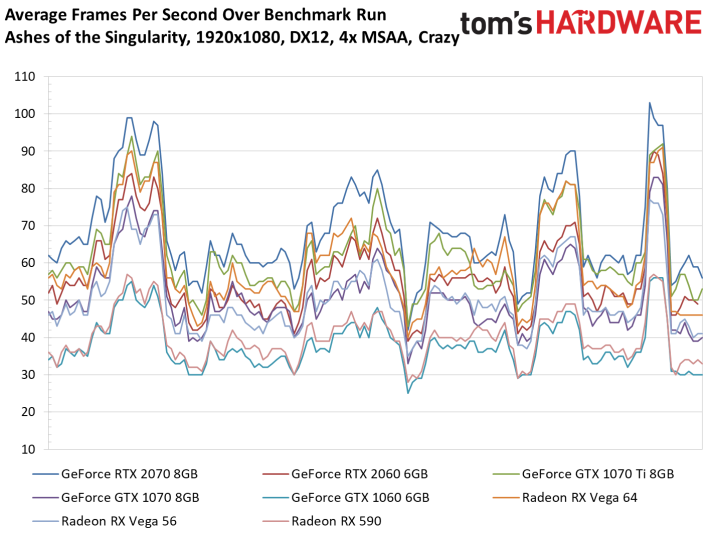
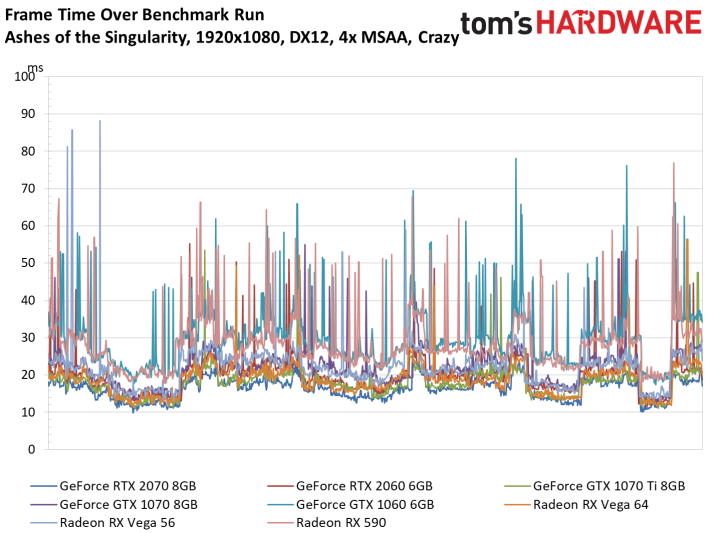
2060 lands right between the 1070 and 1070 Ti. Notably, the 1070 ties AMD’s Radeon RX Vega 56.
The Radeon RX Vega 64 shows up just behind the 1070 Ti in this game, putting it ahead of 2060. AMD’s flagship is also more expensive, though.
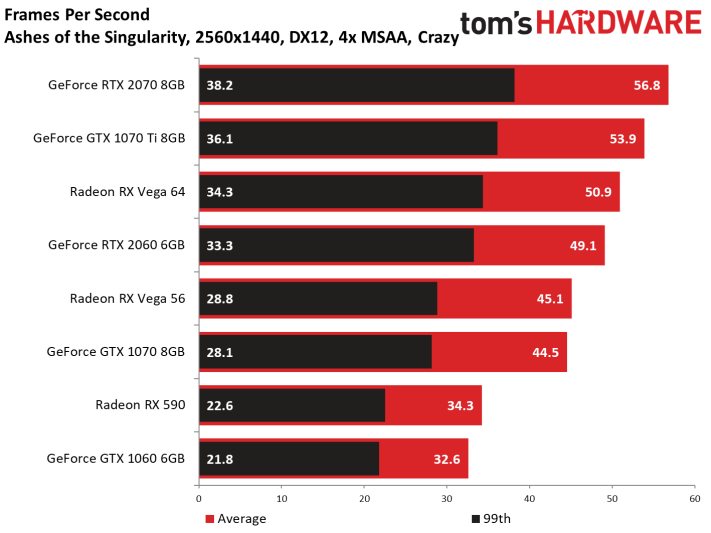
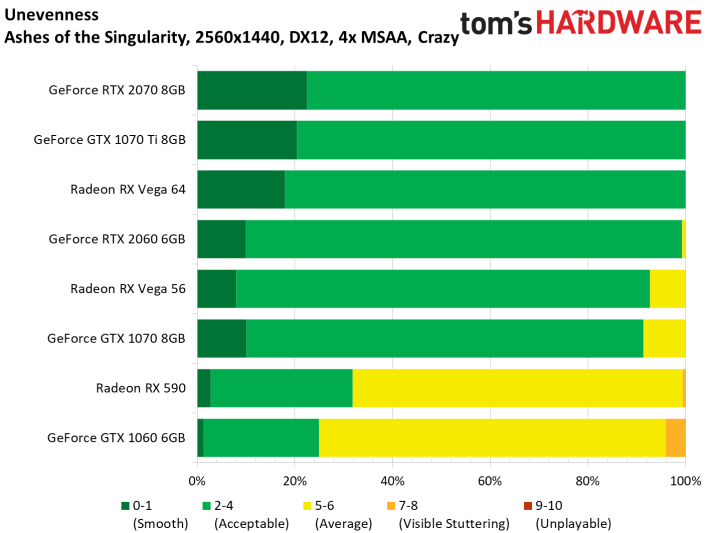
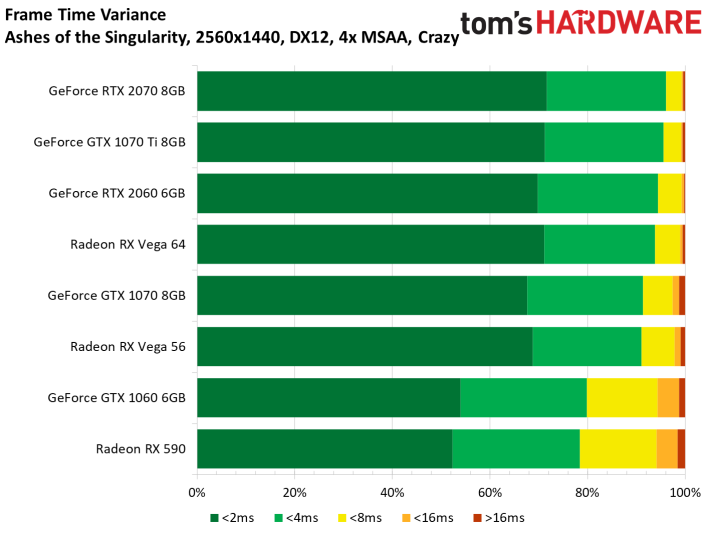
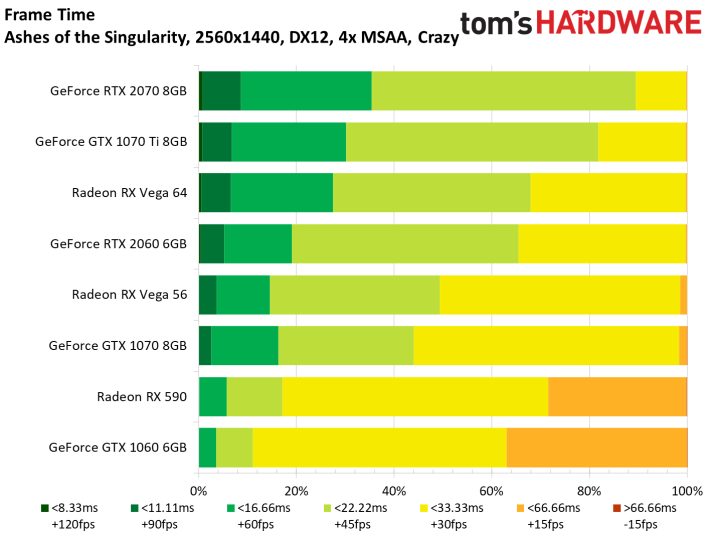
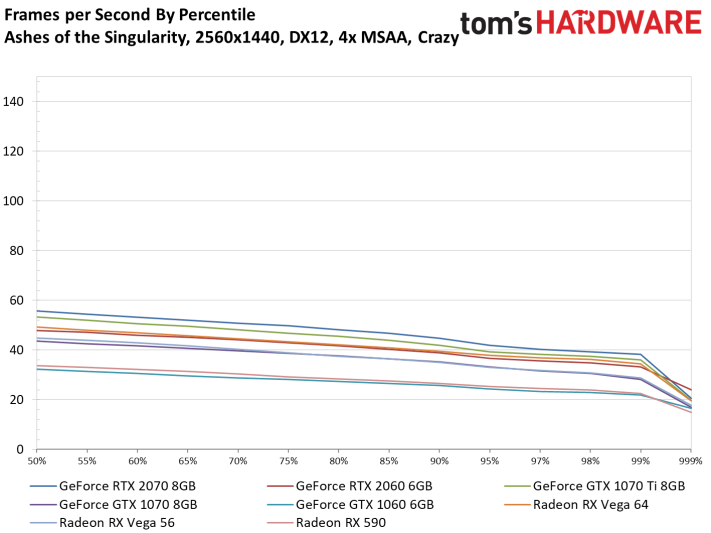
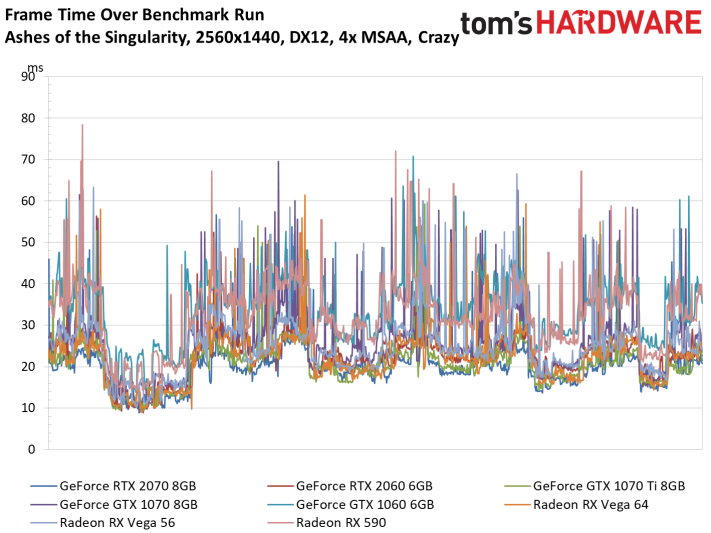
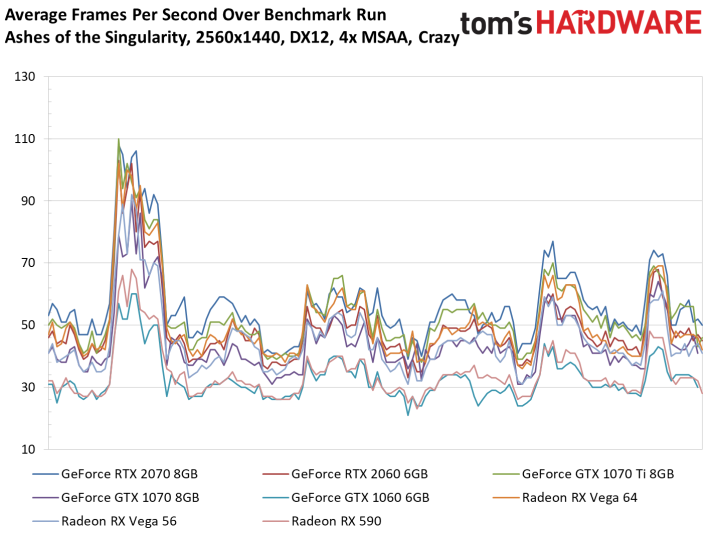
Maintaining the Crazy preset as we increase resolution to 2560x1440 knocks performance back, naturally. Still, the 2060 nearly averages 50 FPS. If 1060 6GB is your baseline, that’s a 51 percent speed-up. We’re more inclined to compare the 2060 to Nvidia’s 1070 though. But even then you’re looking at a 10 percent uplift.
Battlefield V (DX12)
Obviously, Battlefield V is an interesting benchmark for its DXR support. However, we start our testing with DXR disabled and the graphics preset dialed to Ultra.
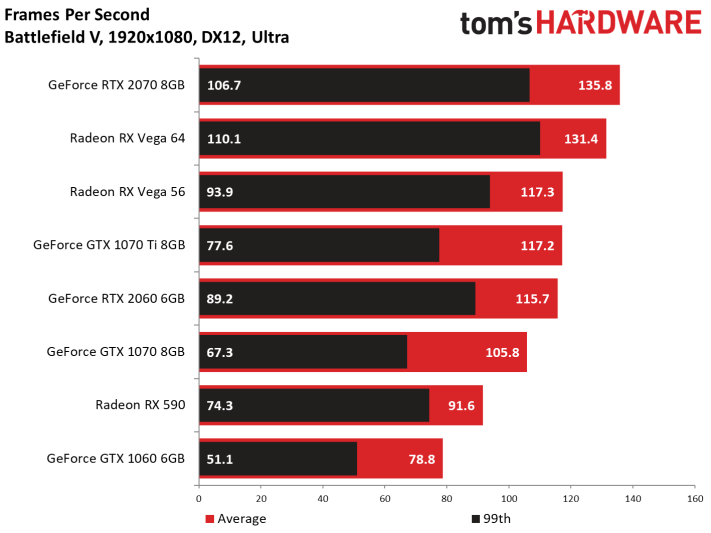
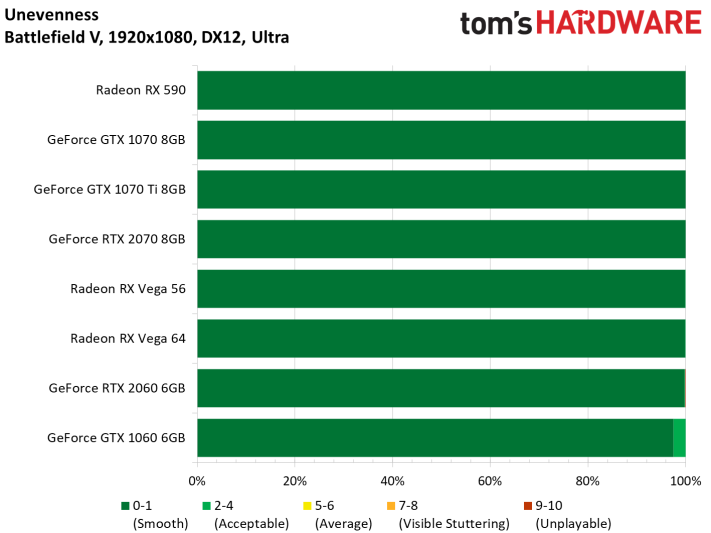
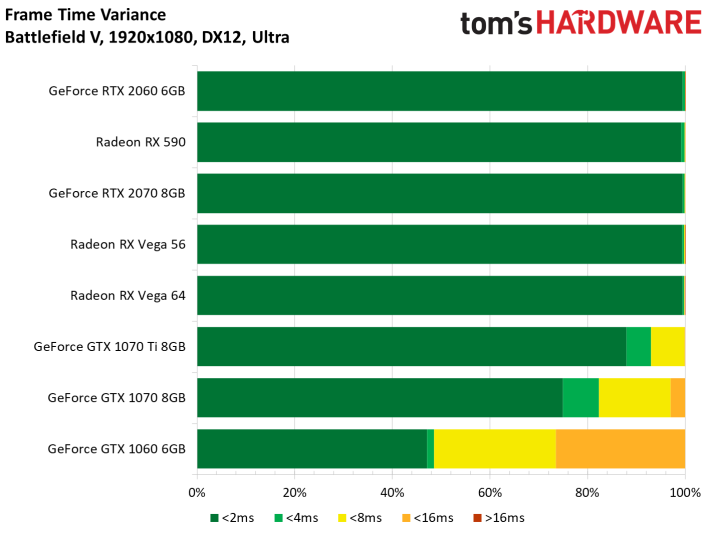
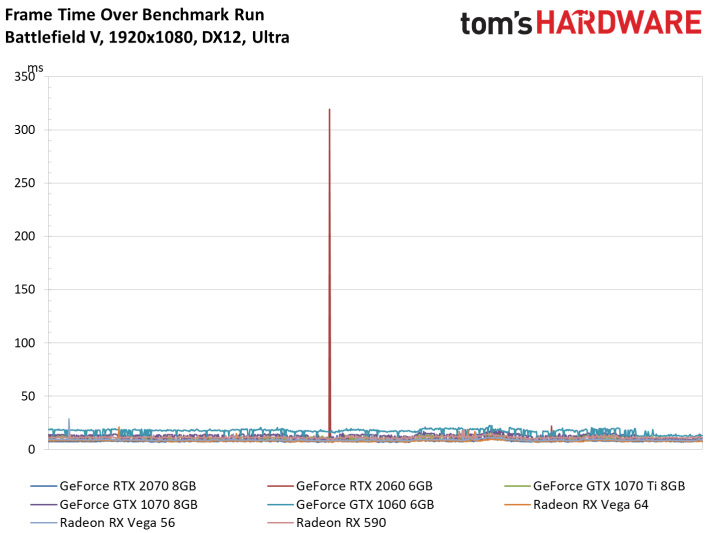
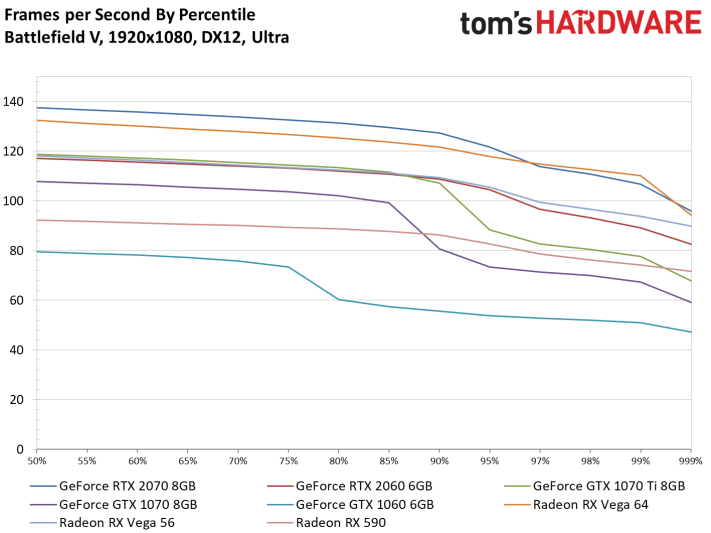
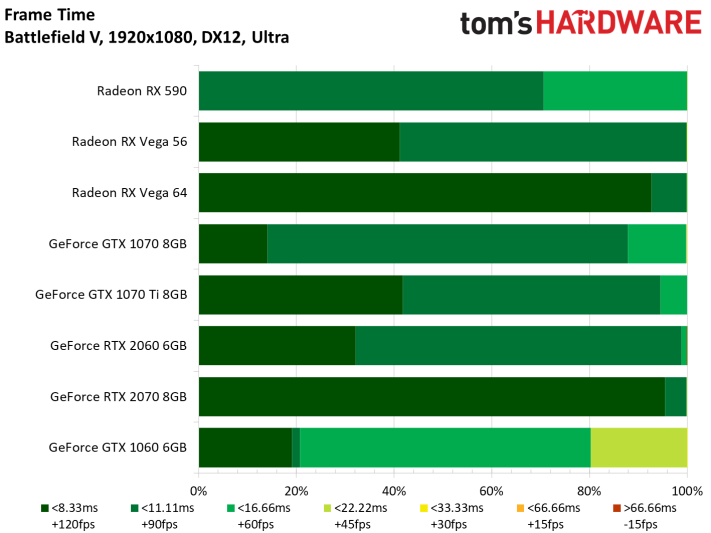
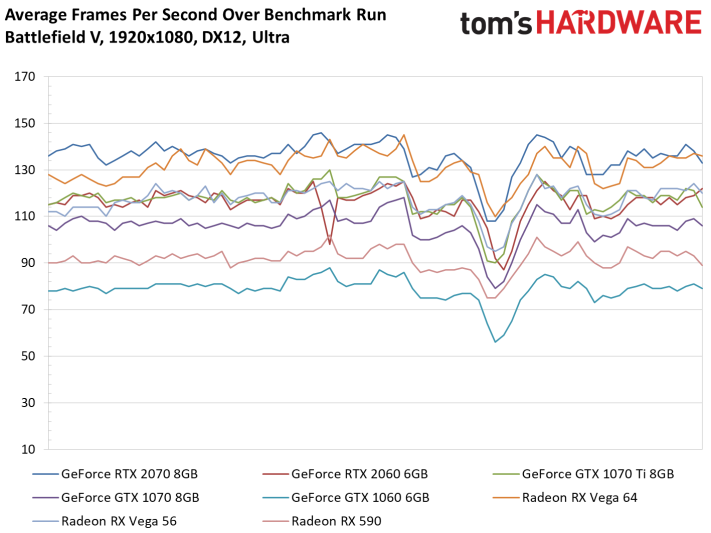
Second- and third-place finishes at 1920x1080 are impressive for Vega 64 and 56. Then again, 1070 Ti and 2060 land within 1 percent of Vega 56's average frame rate.
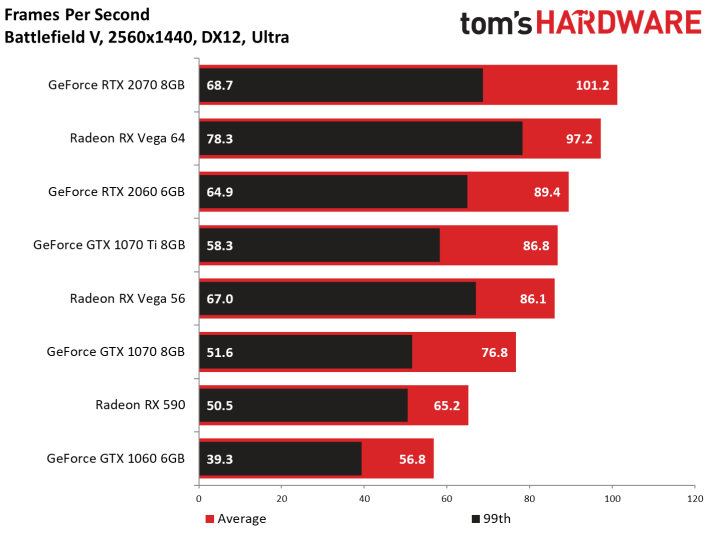
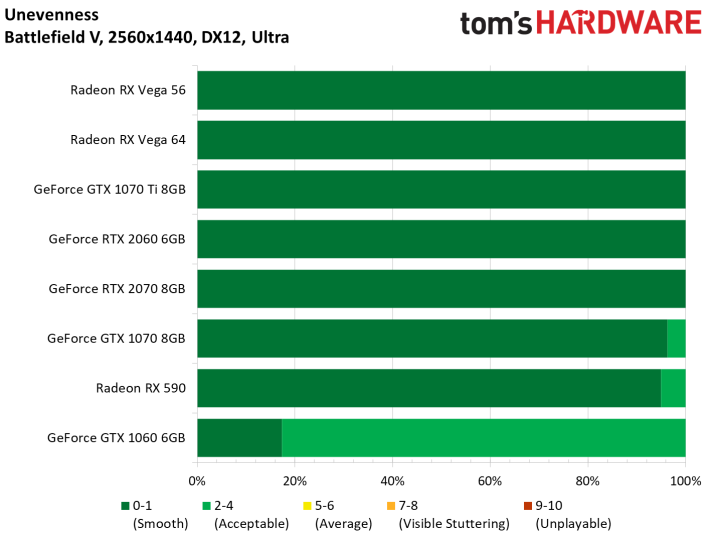
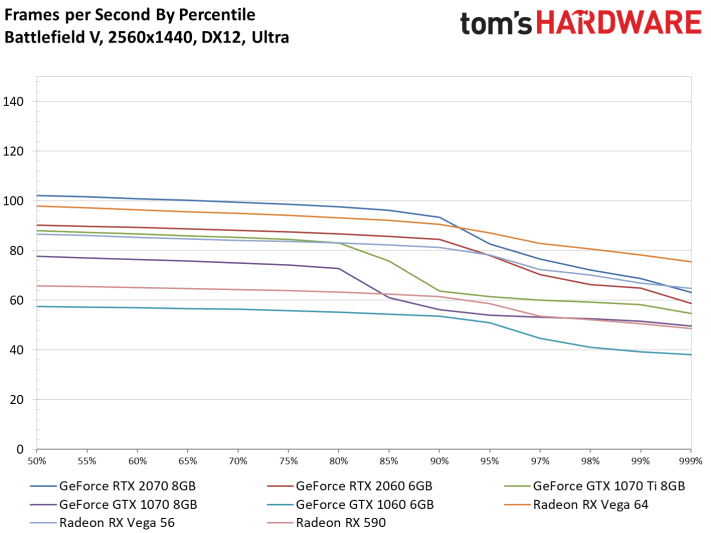
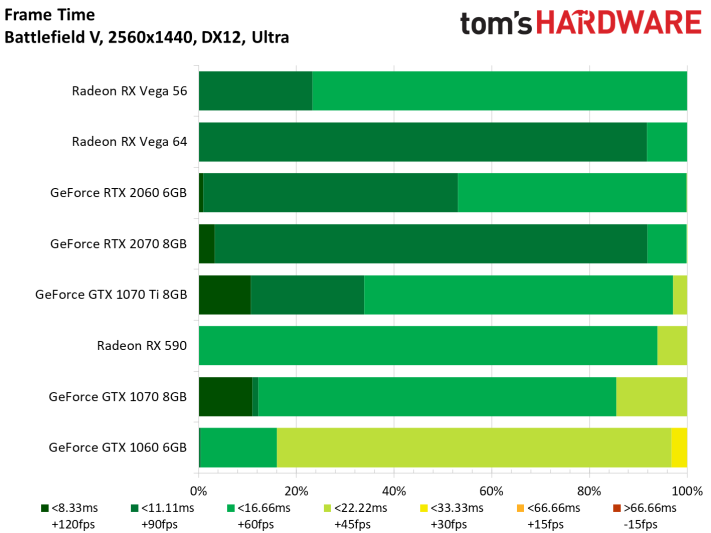
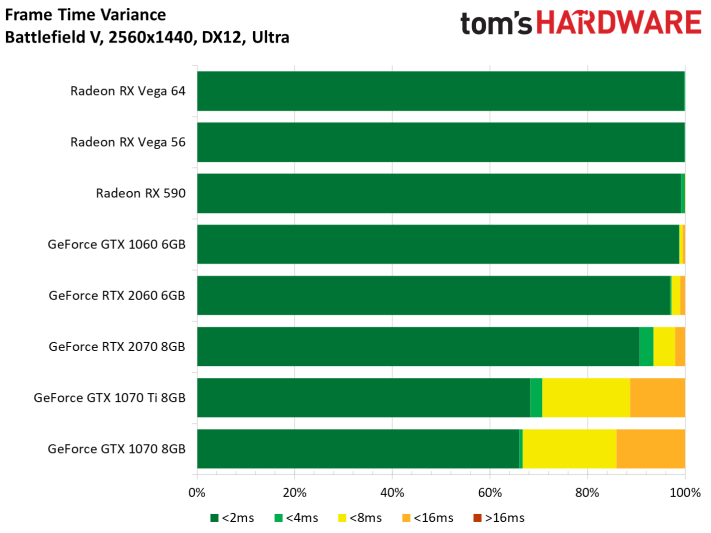
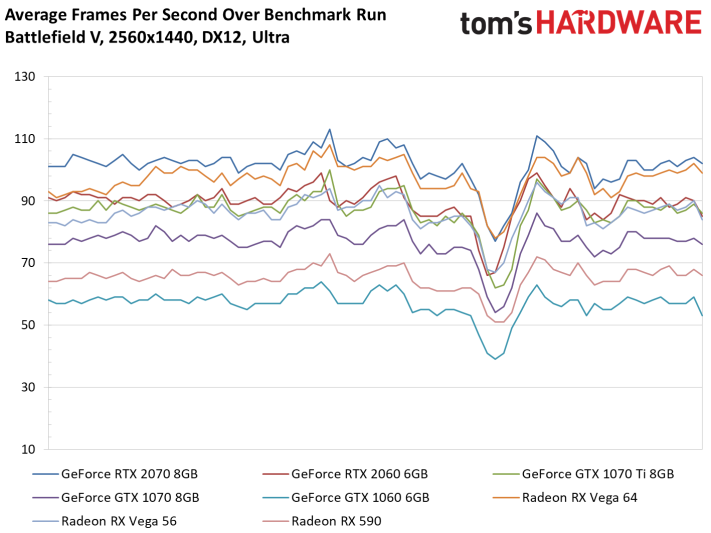
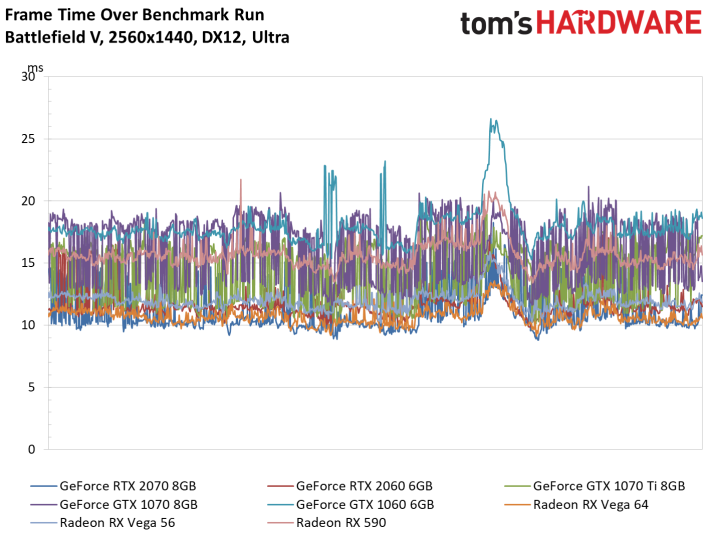
High performance at 1920x1080 practically begs us to gather more performance data at 2560x1440, imposing a more demanding graphics workload. This time, the bandwidth-blessed RTX 2060 pulls into third place behind RX Vega 64. Its advantage over RX Vega 56 is just under 4 percent.
Get Tom's Hardware's best news and in-depth reviews, straight to your inbox.
But Can It Make Real-Time Ray Tracing Playable?
Beyond the RTX 2060’s performance in Battlefield V with the game’s standard settings cranked up, enthusiasts want to know if Nvidia’s hybrid rasterization/ray tracing approach is viable. After all, our day-one benchmarks showed the RTX 2070 averaging just over 60 FPS at 1920x1080 using the Medium DXR Reflection Quality setting.
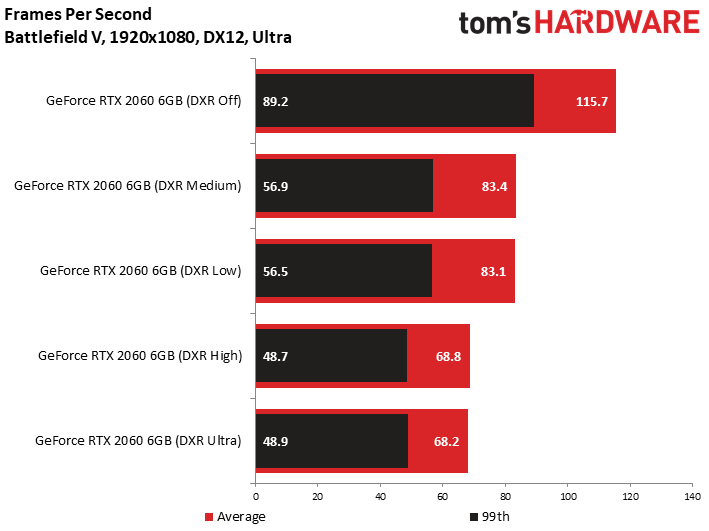
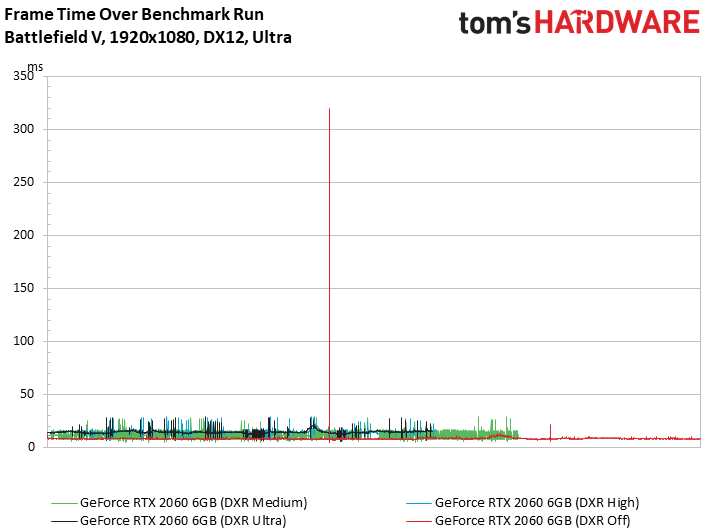
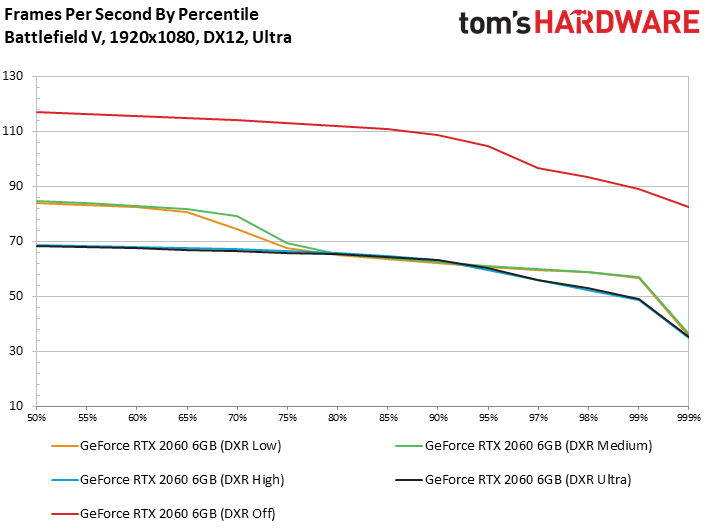
Fortunately, significant optimizations from EA DICE have improved DXR performance since Battlefield V’s launch. RTX 2060 achieves about 72 percent of its original performance after dialing DXR Reflection Quality to Low or Medium and about 59 percent of its average frame rate at High or Ultra. That’s enough to approach the 70 FPS mark at 1920x1080 though.
Nvidia also plans to release a Deep Learning Super Sampling (DLSS) patch soon. That should counter some of the impact absorbed by enabling DXR. We don’t doubt performance would improve with DLSS turned on; our main focus will be on how the technology affects image quality.
MORE: Best Graphics Cards
MORE: Desktop GPU Performance Hierarchy Table
MORE: All Graphics Content
Current page: Results: Ashes of the Singularity and Battlefield V
Prev Page Nvidia GeForce RTX 2060 Founders Edition Review Next Page Results: Destiny 2 and Far Cry 5